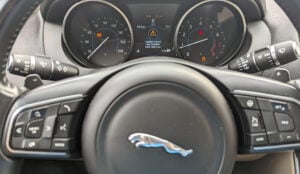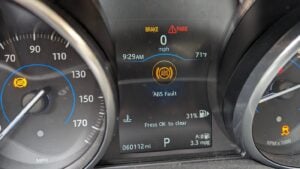Jaguar Dashboard Warning Lights
Is there a warning light appearing on your Jaguar dashboard? Learn the warning light’s symbol and possible solutions to fix the problem by checking the list below.
This guide will discuss the Jaguar dashboard warning lights.
|
The ABS warning lamp will turn on briefly at the beginning of the ignition ON cycle. If the lamp remains on or comes on while the engine is running or driving, the ABS has a fault (though the brakes will still work). Drive with care, avoiding heavy braking. Have the ABS module scanned with a professional OBD-II scanner to read the faults. Common ABS faults:
|
|
|
The check engine light illuminates when the ignition is turned on and stays on until the engine starts. There’s a fault if the light illuminates while the engine is running. With the lamp illuminated, the vehicle is safe to drive, but you should diagnose the fault immediately. While the lamp is on, the vehicle may enter limp mode, which reduces vehicle performance to prevent further damage. If the lamp flashes when the engine is running, slow down as soon as it is safe, and do not drive the vehicle. Have the diagnostic trouble codes pulled with an OBDII scan tool for more information on the fault Common causes of the check engine light:
|
|
|
The airbag warning lamp illuminates as a bulb; check when the ignition is switched on. The lamp should go out again after 6 seconds. If the lamp illuminates while driving, there is a fault with the airbag system. Have the airbag module scanned with an OBDII scan tool to provide more information on the fault. |
|
|
The engine temperature warning lamp comes on when the temperature is overheated. The instrument panel also displays a warning message. Stop as soon as you can safely do so. Allow the engine to cool down and have the vehicle towed if necessary. Check the vehicle’s coolant level and service the cooling system for any problems. Common cooling systems problems:
|
|
|
If the Tire Pressure Monitoring System (TPMS) lamp comes on, one or more tires are significantly under-inflated. You’ll also see a warning message on the instrument panel. Stop the vehicle when it’s safe and check the tire pressure. Inflate to the recommended pressure. If the lamp flashes, there’s a system fault. Common TPMS system faults:
|
|
|
The brake warning lamp illuminates briefly when the ignition is switched on as a bulb check. It will go off in normal conditions while the engine is running and driving. You could fault your brake system or run low on brake fluid if it comes on. Stop as soon as possible, check the fluid level, and fill if necessary. If the light stays on, tow the vehicle and service the brake system. Common brake system problems:
|
|
|
The 12V battery charge warning lamp comes on briefly when the ignition is switched on as a bulb check. It should go out when the engine has started. If the lamp remains on or comes on while driving, there is a fault with the battery charging system. You’ll find a warning message on the instrument panel. Common 12v battery charging system problems:
|
|
|
The diesel exhaust filter warning lamp means that a build-up of soot has occurred in the diesel exhaust particulate filter. The vehicle’s exhaust will need to be serviced, pulled over, and have the vehicle towed. If this light comes on while driving, the vehicle will be put in limp mode to prevent further damage. Follow the exhaust filter regeneration maintenance by using a professional scan tool to start this advanced system function. |
|
|
Land Rover’s latest diesel models produce exceptionally low exhaust emissions due to Diesel Exhaust Fluid (DEF), which is injected into the exhaust gases. If the DEF reservoir runs out completely, the engine will stop rather than risk damaging the engine. The warning lamp illuminates red to warn the driver that the level of DEF is low and needs to be filled. It also comes in red if the incorrect fluid has been added to the system or if there is a fault. Check the message on the instrument panel for more information. If a fault has occurred, use a professional scan tool to read the codes the DEF light has triggered. |
|
|
When the lane departure feature is active, you should always use your direction indicators before crossing a lane marking. If you don’t do so, the red lane departure warning lamp will illuminate (showing which lane boundary you’ve crossed). You will also feel a vibration through the steering wheel. If the vehicle veers out of the indicated lane markers while lane departure is active, the vehicle will self-correct back to the center of the lane; this can be overridden by turning the steering wheel. Turn lane departure off in the information display settings. |
|
|
If the low oil pressure warning lamp flashes or illuminates while driving, stop the vehicle as soon as possible. Switch off the engine immediately. Check and top up the oil level, if necessary. Start the engine. If the lamp remains on, switch the engine off immediately. Contact roadside assistance to be towed and have the vehicle serviced. Common causes of low oil pressure:
|
|
|
The seat belt lamp will come on, and a chime will sound if a passenger or driver unbuckles their belt while the car is in motion. The lamp will go out again when the seat belt is buckled. (Note: if you put objects like bags or shopping on the front passenger seat, they may activate the seat belt reminder feature. Either stow them in the boot or fasten the seat belt around them.) Common causes of failing seat belt warning systems:
|
|
|
The critical warning message lamp will warn when an important message is displayed in the instrument panel. Pull over when it is safe and check the message on the instrument panel. Use your best judgment to determine whether the vehicle is safe to drive. Have the vehicle towed and serviced if necessary. |
|
|
The general warning and information lamp illuminates to let you know that a non-critical warning message, or an information message, is displayed on the instrument panel. Take note of this message and have the vehicle serviced accordingly. The message can be cleared while driving and will display every ignition cycle. |
|
|
The brake warning lamp illuminates briefly when the ignition is switched on to check the bulb is working. If the lamp shows amber after starting the engine or while driving, the cause could be worn brake pads or a fault with the braking system. You can still drive with care but should diagnose the issue immediately. |
|
|
If the filter fails to regenerate and starts to become full, the exhaust warning light comes on amber. The instrument panel also displays a warning message. Follow the on-screen messages when it’s safe to do so. Have the exhaust filter serviced and the diesel fluid checked to prevent further damage. |
|
|
If the Diesel Exhaust Fluid (DEF) warning lamp lights up amber, it means that the level of DEF is running low. The warning lamp also shows amber if the wrong fluid has been added to the system or if there is a fault. The instrument panel will also display a warning message. Check the DEF fluid level and type and service accordingly. |
|
|
The Dynamic Stability Control (DSC) lamp flashes when the system is triggered. If there is a fault with the system, it remains illuminated, and the instrument panel displays a warning message. You can still drive, but the DSC assistance won’t be on, so proceed cautiously. Common causes of stability control failure:
|
|
|
The Dynamic Stability Control (DSC) OFF shows when the system is switched off. A chime and a confirmation message in the instrument panel accompany the lamp. Dynamic stability control will turn on each time the vehicle is started. If it remains off after starting, there is a fault in the system that has been disabled permanently. Have the system scanned with an ABS scan tool and service accordingly. |
|
|
The external temperature lamp illuminates when the external temperature is low enough for ice to form on the road. Drive with caution in these conditions. Always have stability control, and ABS is turned on during extreme weather conditions. |
|
|
The Follow Mode lamp illuminates when the adaptive cruise control system is in follow mode, i.e., maintaining a set distance from the vehicle in front. If the vehicle ahead brakes, automatic braking will be applied. In emergencies, a warning will chime if a sudden collision is detected, and the vehicle will apply the brakes hard to reduce collision impact. |
|
|
The glow plug lamp illuminates when the vehicle’s ignition is switched on to indicate that the glow plugs are active and help the diesel engine to start. Glow plugs heat the engine block on a diesel vehicle to aid in starting the internal combustion engine, which works by compression of diesel fuel without spark. |
|
|
The Hill Descent Control (HDC) lamp illuminates continuously when the HDC system is selected, and the system is controlling a steep descent. If the lamp flashes, HDC has been selected, but the operating conditions are not met, or HDC fade-out occurs. |
|
|
The low fuel warning lamp illuminates when the fuel level is low. You should refuel at the earliest opportunity. The arrow shows which side of the vehicle the fuel filler flap is located. |
|
|
The amber rear fog light indicator illuminates when the rear fog lights are switched on. This indicator will be facing to the right to indicate it is the rear fog lights. The rear fog lights can be turned off by pressing the headlight switch turn dial. |
|
|
The Auto High Beam Assist (AHBA) lamp illuminates when the AHBA feature is active. This will automatically dip your lights to avoid dazzling oncoming traffic. When oncoming traffic is undetected, beams will return to the main beams. |
|
|
The auto stop/start system is designed to save fuel in traffic. It turns off the engine when coming to a complete stop. The lamp illuminates when the engine is momentarily shut down but ready to start again. When the accelerator is pushed, the engine will automatically start again. If the indicator is amber, the system is disabled and needs to be serviced. |
|
|
The lamp illuminates when cruise control or adaptive cruise control is active. The vehicle’s cruising speed can be set via the steering wheel’s cruise control stalk or buttons. While active and set, the vehicle will travel at its set speed. To turn off cruise control, disable it on the stalk or via the off button on the steering wheel. |
|
|
The appropriate direction indicator lamp left or right flashes when the direction indicators are operated via the turn signal stalk. If a direction indicator bulb fails, the visual and audible warnings flash and sound at twice the normal rate. Common direction indicator fault:
|
|
|
The exhaust filter lamp briefly illuminates green after a successful filter regeneration process. |
|
|
The forward alert lamp illuminates when a vehicle or object is detected within a set range ahead of the vehicle while forward alert monitoring is active. The driver is responsible for avoiding collision unless auto emergency braking is active. |
|
|
The lane departure warning lamp illuminates to confirm the lane departure warning system is active. Recognized lane markings that have not been crossed will illuminate green. These are the indicated lane markings the vehicle will stay inside. If the vehicle crosses these, the lane indicators will turn red. Refer to lane departure warning (red). |
We hope you find the Jaguar Dashboard Warning Lights guide helpful. Check these troubleshooting and repair guides for more help on your Jaguar.


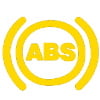 Anti-Lock Brake System (
Anti-Lock Brake System (
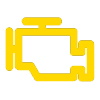 Check Engine
Check Engine Air Bag
Air Bag Engine Temperature
Engine Temperature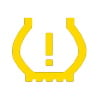 Tire Pressure Monitoring System
Tire Pressure Monitoring System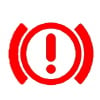 Handbrake / Brake System
Handbrake / Brake System Battery
Battery Diesel Exhaust Fluid (DEF) Exhaust Filter (Red)
Diesel Exhaust Fluid (DEF) Exhaust Filter (Red) Exhaust Diesel Exhaust Fluid (DEF) (Red)
Exhaust Diesel Exhaust Fluid (DEF) (Red) Lane Departure Warning
Lane Departure Warning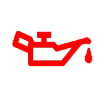 Low Oil Pressure
Low Oil Pressure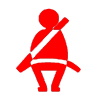 Seat Belt Reminder
Seat Belt Reminder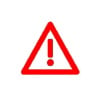 Triangle Critical Warning
Triangle Critical Warning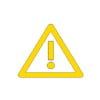 Amber Triangle General Message
Amber Triangle General Message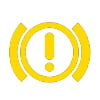 Brake Warning (Amber)
Brake Warning (Amber)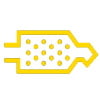 Exhaust Filter (Amber)
Exhaust Filter (Amber) Diesel Exhaust Fluid (DEF) (Amber)
Diesel Exhaust Fluid (DEF) (Amber) Dynamic Stability Control
Dynamic Stability Control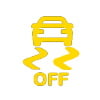 Dynamic Stability Control OFF
Dynamic Stability Control OFF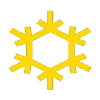 External Temperature
External Temperature Follow Mode
Follow Mode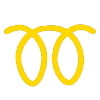 Glow Plugs
Glow Plugs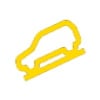 Hill Descent Control
Hill Descent Control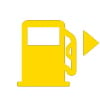 Low Fuel Warning
Low Fuel Warning Rear Fog Lights
Rear Fog Lights Auto High Beam Assist
Auto High Beam Assist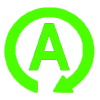 Auto Stop-Auto Start (Green)
Auto Stop-Auto Start (Green)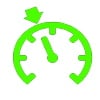 Cruise Control
Cruise Control Direction Indicators
Direction Indicators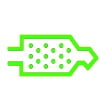 Exhaust Filter (Green)
Exhaust Filter (Green)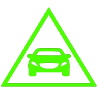 Forward Alert
Forward Alert Lane Departure Warning (green)
Lane Departure Warning (green)
